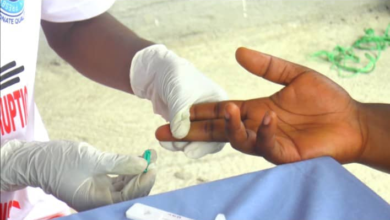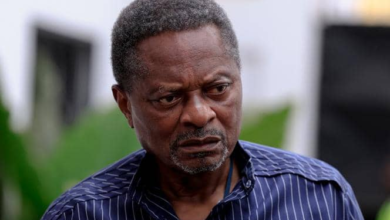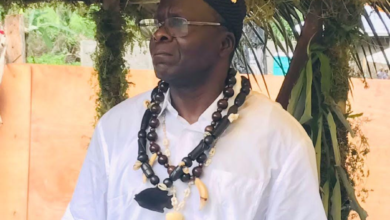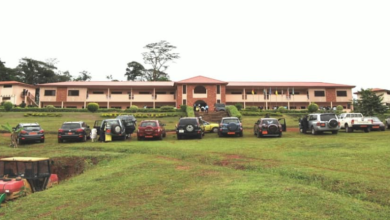Cameroon Must Now Adopt A Social Protection Approach In Fight Against COVID-19.

By Paul Timah
The handling of COVID-19 in Cameroon has largely been politicized to the detriment of the most vulnerable persons. The government and some opposition parties are increasingly turning to the traditional and social media to reproach the efforts of each other. Taking a step away from this politics, some largely neglected social protection measures that could be crucial in the country’s fight against COVID-19 would be advanced. The International Monetary Fund (IMF) defines social protection as “the set of policies and
The country’s very weak social protection system has further compounded these vulnerabilities. The success of some of the COVID-19 policy measures implemented so far depends largely on the public’s respect
Why is confinement or a would be lock down be problematic?
According to the International Labour Organization (ILO), the current social protection system in Cameroon is mainly provided through the Civil Service and the National Social Insurance Fund (NSIF). The NSIF provides most of the ILO recommended benefits except for unemployment insurance (which is crucial in this case) and sick benefits. This is compounded by the fact that about 90 percent of Cameroon’s active

Moreover, only 2 percent of the informal sector workforce was offered protection by the NSIF scheme in 2016. This implies that about 88 percent of the active
What has been done in Cameroon?
So far, the COVID-19 policy measures formulated and implemented by the government have not incorporated any concrete social protection measures. On the contrary, Cameroonians who do not comply with the mandatory use of protective masks in public places are being levied 6,000 XAF for
As a renewed effort, on April 20, 2020 the government decided to offer 1,500,000 masks to the 360 municipal councils within the country. While this is a laudable action, these masks would serve only an estimated 6.25 percent of the population and given the poverty rate ($1.90 line) of about 23.8 percent, it is left to be seen how the over 17 percent of the most vulnerable would be able to afford a mask on a regular basis. On April 16, 2020, the Minister of Public Health instructed all regional public health delegates, heads of public health facilities and public medical laboratories to ensure that no one is charged for COVID-19 tests and treatment. Although this is a welcome social protection measure, it is quite disturbing to note that patients were still being charged for such services as of April 16, 2020. Such practices only go a long way to compound already existing vulnerabilities.
What is being done elsewhere?
Across the globe, like-minded governments such as those of the United States, Canada

It is interesting to note that
Cameroon has so far created a solidarity fund with an initial amount of 1 billion XAF (just about 0.02 percent of the country’s 2020 budget) and an additional amount of 2 billion XAF, meant to support municipal councils. It should be noted that all these funds only amount to about 0.06 percent of the 2020 state budget and it is abundantly clear that less than half of the funds would be directed towards social protection initiatives that will directly benefit the population. Although both countries have almost the same number of COVID-19 cases, it is worth mentioning that Cote d’Ivoire (which has relatively fewer cases than Cameroon) has committed significantly more financial resources than Cameroon. The financial comparisons made here clearly indicate deeper governance challenges for Cameroon and its spending priorities. However, as seen in Cote d’Ivoire and elsewhere, most national governments are reprioritizing expenditures towards fighting COVID-19, with corresponding social protection measures. Cameroon should not be an exception.
What must Cameroon do now?
It was interesting to hear Maître Emmanuel Pensy (a central bureau member of the ruling CPDM party) echo on Equinoxe TV’s Droit de
- The government should come up with a holistic social protection approach for the most vulnerable persons and an effective targeting mechanism that clearly spells out how much funds are made available and eligibility requirements. The government can resort to the last national household survey results and geographic targeting for effective targeting. As a guide, an estimated 44 billion XAF per month would be needed to provide social protection to the poorest households in Cameroon during this COVID-19 times. This estimation is presented in the table below.
- The government should make monthly cash transfers equal to the minimum monthly wage of 36,270 XAF to persons employed in the former sector who have lost their employment or have seen their employment suspended or greatly impacted by COVID-19. Households
which have at least one member still in employment and earning above the minimum wage should be exempted. - The government should ease the financial burdens and hardships imposed by COVID-19 on households by suspending the payment of rents for the months of April, May and June 2020 or until such time that economic activities can return to normal, and put in place a six months payment plan for the accrued rents. It should also make it possible for individuals to apply for financial support if they can show that paying the accrued rents will cause them untold hardship. Additionally, the government should make water and
electricity free for all households, especially the most vulnerable ones, for the months of April, Mayand June 2020. - The government should increase subsidies on basic consumer goods and ensure effective price controls to prevent consumer abuse. Food banks could equally be created to collect and donate food to the most vulnerable households during these COVID-19 times.
- The government should immediately stop to charge citizens who violate the use of protective masks in public
place and rather focus on providing free masks to the population. - The government must ensure that all screening of suspected COVID-19 cases and the treatment of cases are done free of any costs to the patients by putting in place a dedicated whistleblower or hotline that the public can call to make complaints of patient extortion. The hotline team should be manned by proactive enforcement agents who must investigate or intervene on all complaints within 24 hours.
- The government should adopt a non-partisan approach which brings together members of the business community, civil society and opposition parties to proactively implement COVID-19 social protection measures and other measures taken so far. The government must take the lead in ending the politicization of COVID-19 by creating an inclusive solidarity committee that includes the above-mentioned actors.

Implementing the above-mentioned social protection measures will reduce vulnerabilities, reinforce confinement efforts, toughen the resilience to COVID-19 and thus flatten the curve of new infections and deaths. Stay safe folks!




